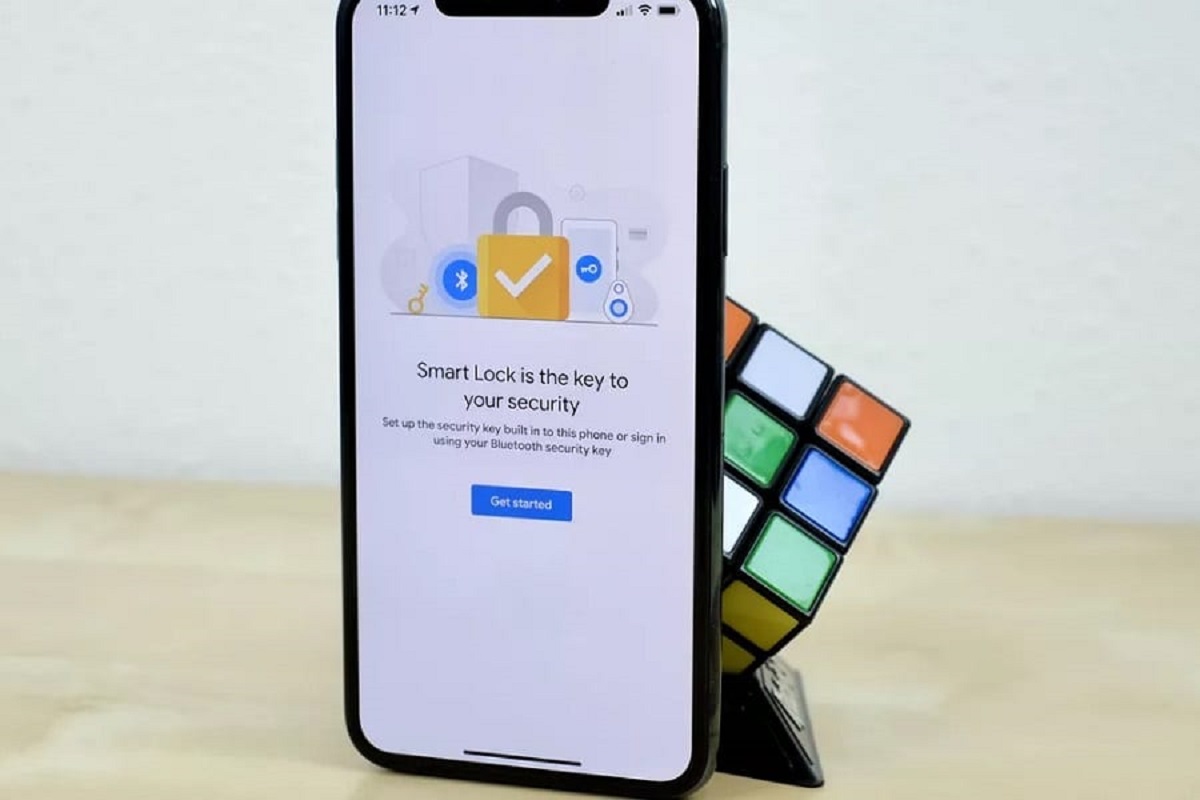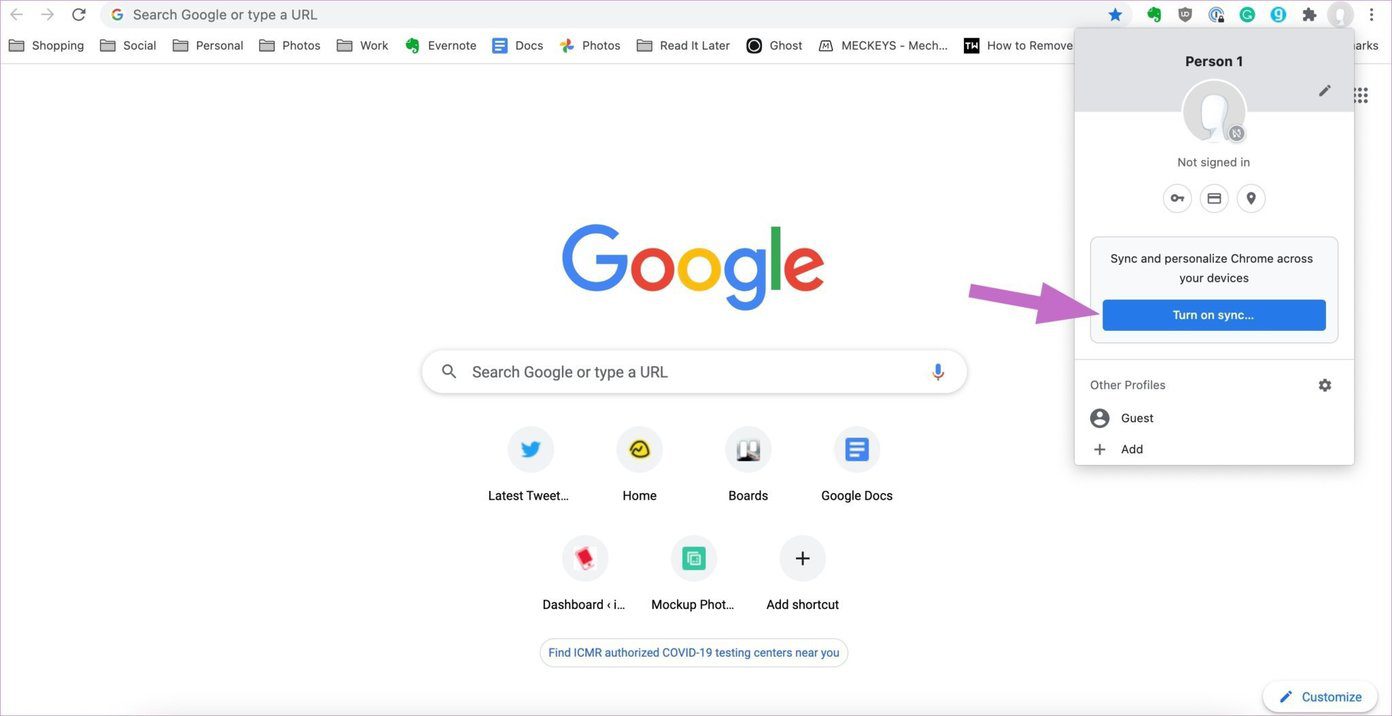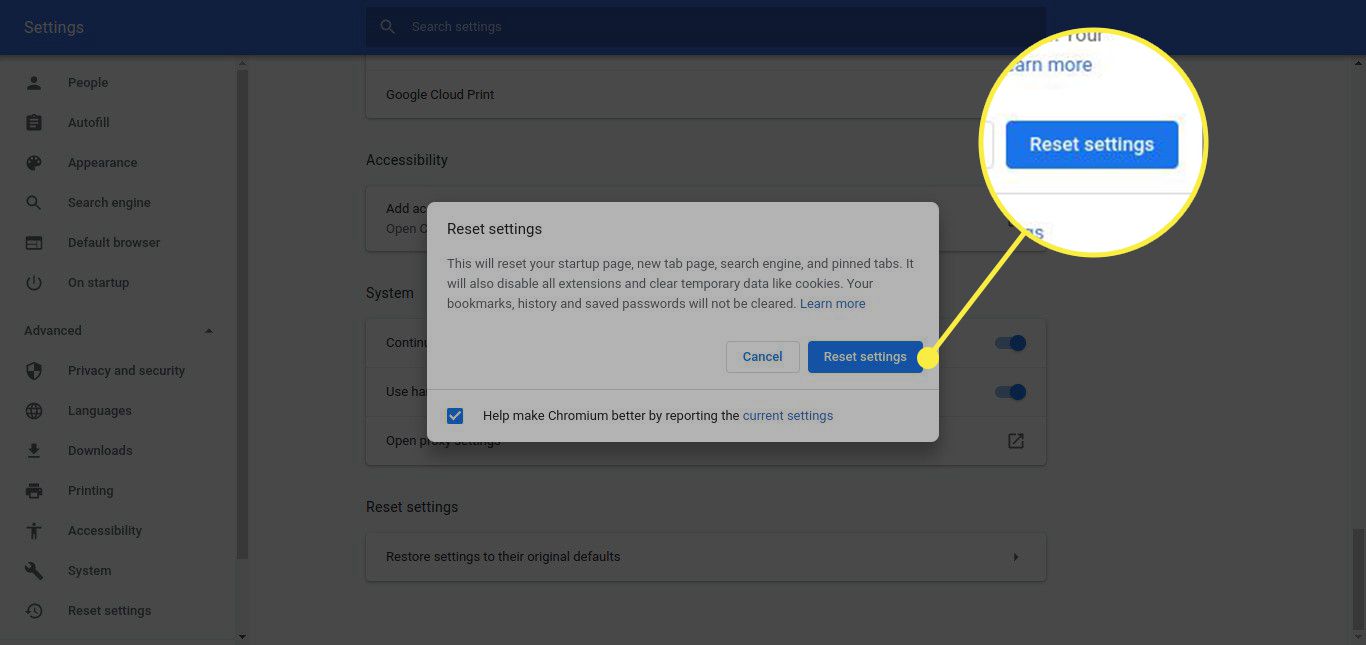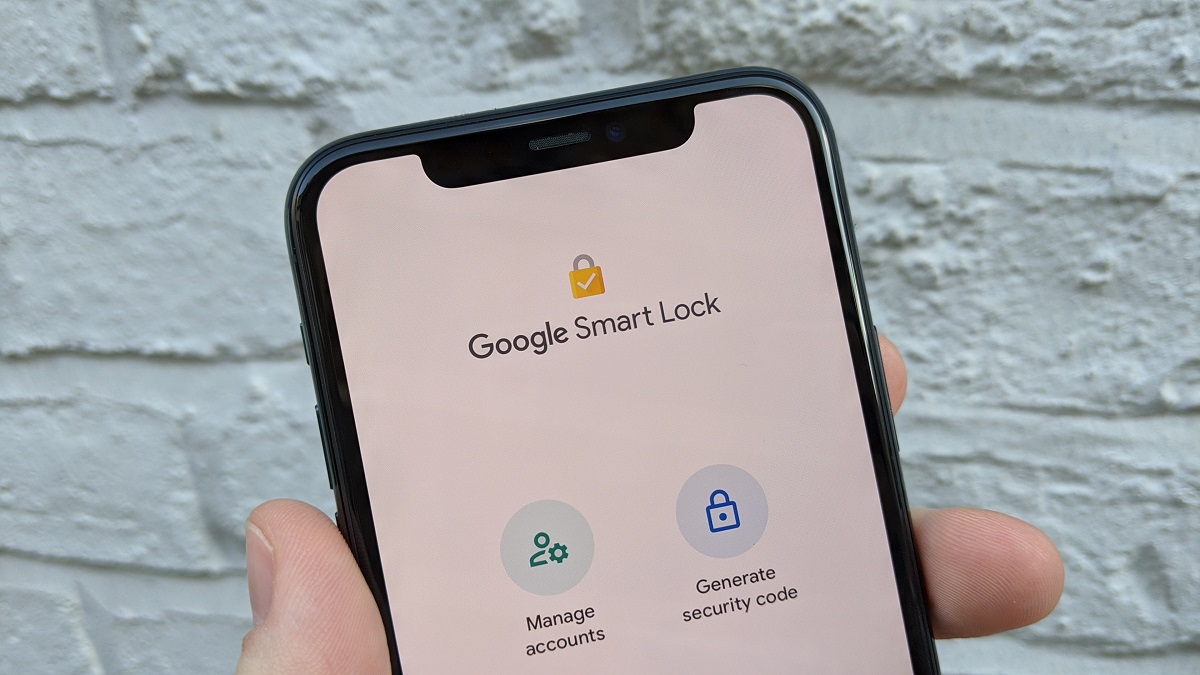Introduction
Have you ever experienced the frustration of Google Chrome not saving your passwords? It can be quite perplexing when you rely on the browser's autofill feature to conveniently access your accounts, only to find that it's not working as expected. This issue can disrupt your workflow and lead to unnecessary inconvenience. However, there are several factors that could contribute to this problem, and understanding them can help you troubleshoot and resolve the issue effectively.
In this article, we will delve into the various reasons why Google Chrome may not be saving your passwords. From browser settings and password manager configurations to the impact of incognito mode and the presence of third-party extensions, we will explore the potential culprits behind this common issue. Additionally, we will discuss the role of clearing browsing data and the impact of Google account sync on password management within Chrome.
By gaining insights into these factors, you can equip yourself with the knowledge needed to address the issue and ensure that Google Chrome functions seamlessly in saving and autofilling your passwords. Let's embark on this journey to unravel the mysteries behind Google Chrome's password-saving functionality and empower ourselves with the know-how to overcome any obstacles that may arise.
Browser Settings
The browser settings in Google Chrome play a pivotal role in determining whether the browser saves your passwords. If you find that Chrome is not saving your passwords, it's essential to inspect and adjust the browser settings to ensure that the autofill feature operates smoothly.
First and foremost, let's navigate to the Chrome settings by clicking on the three-dot menu icon in the top-right corner of the browser window and selecting "Settings" from the dropdown menu. Within the Settings menu, locate and click on "Passwords" in the left-hand navigation pane. This will lead you to the Passwords settings, where you can review and modify the options related to password management.
One critical setting to check is the "Offer to save passwords" feature. Ensure that this option is enabled so that Chrome prompts you to save passwords when you log in to a new website. If this feature is disabled, Chrome will not offer to save passwords, leading to the inconvenience of manually entering your credentials each time.
Additionally, it's important to verify that the "Auto Sign-in" feature is turned on. This setting allows Chrome to automatically sign you in to websites using the stored passwords, streamlining the login process and enhancing user convenience. By enabling this feature, you can mitigate the issue of Chrome not saving your passwords and facilitate seamless access to your online accounts.
Furthermore, within the Passwords settings, you can review the list of saved passwords and their respective websites. This provides transparency and control over the stored credentials, allowing you to edit or remove saved passwords as needed. By managing this list, you can ensure that Chrome accurately saves and retains your passwords, preventing any potential discrepancies in the autofill process.
In some cases, the browser settings may have been inadvertently modified, leading to the disruption of password-saving functionality. By revisiting and adjusting these settings as necessary, you can troubleshoot the issue and restore Chrome's ability to save your passwords effectively.
By taking a proactive approach to inspecting and configuring the browser settings related to password management, you can address the issue of Google Chrome not saving your passwords. These adjustments empower you to optimize the autofill feature, streamline the login process, and enhance your overall browsing experience within Chrome.
Password Manager
The Password Manager feature within Google Chrome serves as a central hub for storing and organizing your login credentials across various websites. When encountering the issue of Chrome not saving your passwords, it's crucial to delve into the intricacies of the Password Manager to identify potential factors contributing to this setback.
Upon accessing the Password Manager settings in Chrome, you gain visibility into the stored passwords, associated websites, and the option to manage this repository of credentials. This centralized storage mechanism not only facilitates the autofill functionality but also empowers users to maintain a secure and organized collection of their login information.
One fundamental aspect to consider within the Password Manager is the integrity of the saved passwords. It's essential to verify that the passwords are accurately stored and associated with the corresponding websites. Inaccuracies or discrepancies in this regard can impede Chrome's ability to autofill the credentials, leading to the perception of passwords not being saved.
Furthermore, the Password Manager provides the flexibility to edit or remove saved passwords, enabling users to rectify any inaccuracies and streamline the autofill process. By meticulously reviewing and managing the stored passwords, you can ensure that Chrome operates seamlessly in saving and autofilling your login credentials.
In addition to managing the stored passwords, the Password Manager also offers the option to generate secure and complex passwords for new accounts. This feature promotes robust password security by creating unique and intricate passwords, thereby enhancing the overall resilience of your online accounts.
Moreover, the Password Manager integrates with the browser's autofill functionality, enabling Chrome to automatically populate login fields with the stored credentials. However, if the Password Manager encounters any inconsistencies or conflicts in the saved passwords, it may impact the autofill process, giving the impression that Chrome is not saving passwords effectively.
By comprehensively exploring the intricacies of the Password Manager, users can gain valuable insights into the mechanisms governing password storage and autofill functionality within Google Chrome. This understanding empowers individuals to troubleshoot and optimize the Password Manager settings, thereby addressing the issue of Chrome not saving passwords and fostering a seamless browsing experience.
In essence, the Password Manager serves as a cornerstone of password management within Chrome, offering a robust platform for storing, organizing, and autofilling login credentials. By leveraging the capabilities of the Password Manager and ensuring the accuracy of stored passwords, users can mitigate the challenges associated with Chrome's password-saving functionality and streamline their online interactions with enhanced convenience and security.
Incognito Mode
When grappling with the perplexing issue of Google Chrome not saving your passwords, it's imperative to consider the impact of the browser's Incognito Mode. This specialized browsing mode operates distinctively from the standard browsing mode, and its unique characteristics can influence the behavior of Chrome's password-saving functionality.
Incognito Mode, also known as private browsing, offers users the ability to navigate the web without the browser retaining a record of their browsing history, cookies, or site data. This privacy-centric feature is designed to provide a discreet and ephemeral browsing experience, ensuring that no traces of the user's online activity are stored within the browser.
However, the privacy-focused nature of Incognito Mode extends to the handling of login credentials, including passwords. When browsing in Incognito Mode, Chrome refrains from saving passwords or utilizing stored credentials to autofill login fields. This deliberate approach aligns with the overarching goal of maintaining privacy and discretion, thereby preventing the automatic saving and autofilling of passwords that users may expect in the standard browsing mode.
As a result, if you frequently utilize Incognito Mode for your browsing sessions, you may encounter the perception that Google Chrome is not saving your passwords. This discrepancy arises from the intentional behavior of Incognito Mode, which abstains from retaining any form of browsing data, including login credentials, to preserve user privacy and anonymity.
It's important to recognize that the absence of password-saving functionality in Incognito Mode is not indicative of a flaw or malfunction within Chrome. Rather, it reflects the deliberate design of this browsing mode to uphold stringent privacy standards and ensure that no traces of sensitive information, such as passwords, are stored within the browser during private browsing sessions.
Therefore, if you find that Chrome is not saving your passwords, it's essential to consider whether you are actively browsing in Incognito Mode. By transitioning to the standard browsing mode, you can leverage Chrome's password-saving capabilities and benefit from the convenience of autofilling your login credentials across various websites.
In essence, the distinctive behavior of Incognito Mode in refraining from saving passwords aligns with its overarching objective of preserving user privacy and anonymity. By understanding this nuanced aspect of Chrome's private browsing feature, users can navigate the intricacies of password-saving functionality and optimize their browsing experience based on their privacy preferences and requirements.
Clearing Browsing Data
Clearing browsing data within Google Chrome can significantly impact the browser's ability to save passwords effectively. When users engage in the process of clearing browsing data, which encompasses the deletion of cookies, cached images and files, browsing history, and other site data, it can inadvertently disrupt the seamless operation of Chrome's password-saving functionality.
By erasing browsing data, users essentially reset the stored information that Chrome utilizes to facilitate the autofill feature, including saved passwords. This reset can lead to the perception that Google Chrome is not saving passwords, as the previously stored credentials are removed during the data clearance process.
Moreover, the act of clearing browsing data may inadvertently reset certain browser settings related to password management, potentially altering the behavior of Chrome's autofill feature. This can result in disruptions to the password-saving process, causing users to encounter difficulties in accessing their accounts seamlessly.
It's important to note that while clearing browsing data can have implications for password-saving functionality, it also serves as a valuable maintenance practice to optimize browser performance and address potential issues related to cached data and browsing history. However, users should be mindful of the repercussions on password management when engaging in this process.
To mitigate the impact of clearing browsing data on password-saving functionality, users can take proactive measures to ensure that their passwords are securely stored and readily accessible. This includes reviewing the browser settings related to password management after clearing browsing data, verifying the integrity of saved passwords, and re-enabling any features that support the autofill process.
By maintaining awareness of the interplay between clearing browsing data and password-saving functionality, users can navigate the intricacies of Chrome's settings and optimize their browsing experience. This proactive approach empowers individuals to address any challenges related to password-saving and uphold the seamless operation of Google Chrome's autofill feature.
In essence, while clearing browsing data is a valuable maintenance practice, users should be cognizant of its potential impact on password-saving functionality and take appropriate measures to ensure a smooth and uninterrupted browsing experience within Google Chrome.
Third-Party Extensions
The presence of third-party extensions within Google Chrome can exert a significant influence on the browser's password-saving functionality. These extensions, which encompass a diverse array of tools and enhancements developed by external parties, have the potential to interact with and modify the core behavior of Chrome, including its handling of saved passwords and autofill capabilities.
When users encounter the perplexing issue of Google Chrome not saving their passwords, it's essential to scrutinize the impact of third-party extensions on this aspect of browser functionality. Third-party extensions, while offering valuable features and functionalities, can inadvertently interfere with Chrome's native password-saving mechanisms, leading to disruptions in the autofill process and the perception of passwords not being saved effectively.
The influence of third-party extensions on password-saving functionality can manifest in various ways. Some extensions may introduce conflicts or compatibility issues that impede Chrome's ability to save and autofill passwords seamlessly. Additionally, certain extensions may alter the browser's settings or behavior in a manner that disrupts the autofill feature, creating obstacles for users who rely on Chrome's password-saving capabilities.
To address the potential impact of third-party extensions on password-saving functionality, users can undertake proactive measures to identify and assess the extensions installed in their Chrome browser. By navigating to the Extensions menu within Chrome's settings, users can review the list of installed extensions, evaluate their functionalities, and consider the implications of each extension on password management.
Furthermore, users can selectively disable or remove third-party extensions to gauge their impact on Chrome's password-saving behavior. This systematic approach allows users to isolate the influence of specific extensions and discern whether any conflicts or disruptions arise in the context of password management.
By gaining insights into the interplay between third-party extensions and password-saving functionality, users can make informed decisions regarding the installation and utilization of extensions within Google Chrome. This informed approach empowers individuals to optimize the browser's performance and ensure the seamless operation of password-saving and autofill features.
In essence, the presence of third-party extensions introduces a dynamic element into the realm of password-saving functionality within Google Chrome. By acknowledging and addressing the potential impact of these extensions, users can navigate the intricacies of browser customization while upholding the smooth and efficient operation of Chrome's password-saving capabilities.
Google Account Sync
The Google Account Sync feature plays a pivotal role in orchestrating the seamless integration of user data, preferences, and settings across various devices and platforms. When examining the perplexing issue of Google Chrome not saving passwords, it becomes imperative to delve into the intricate dynamics of Google Account Sync and its potential impact on password-saving functionality within the Chrome browser.
Google Account Sync serves as a conduit for synchronizing a user's browsing data, including saved passwords, across multiple devices where the user is signed in with their Google account. This synchronization mechanism ensures that the user's browsing experience remains consistent and harmonized, irrespective of the device or platform being utilized.
However, the intricate interplay between Google Account Sync and password-saving functionality warrants careful consideration. In scenarios where users encounter the perception that Google Chrome is not saving their passwords, the synchronization process facilitated by Google Account Sync becomes a focal point for investigation.
One fundamental aspect to scrutinize is the synchronization status of saved passwords across devices. Users should verify whether the saved passwords from one device are seamlessly propagated to other devices through the synchronization process. Discrepancies in this synchronization mechanism can lead to the perception of passwords not being saved effectively within Chrome, thereby necessitating a thorough assessment of the synchronization integrity.
Furthermore, users should assess the synchronization settings within their Google Account to ensure that the synchronization of passwords is enabled and functioning as intended. By navigating to the synchronization settings, users can review the specific data categories being synchronized, including passwords, and verify that the synchronization process is actively encompassing password-saving functionality within Chrome.
In addition, users should consider the impact of Google Account Sync on the autofill behavior of Chrome across devices. The synchronization of saved passwords influences the autofill feature, enabling users to seamlessly access their accounts on different devices without the need for manual input of credentials. Therefore, any disruptions in the synchronization process can manifest as challenges in the autofill functionality, contributing to the perception of Chrome not saving passwords effectively.
By comprehensively exploring the intricate dynamics of Google Account Sync and its influence on password-saving functionality, users can gain valuable insights into the synchronization mechanisms governing their browsing experience. This understanding empowers individuals to troubleshoot and optimize the synchronization settings, thereby addressing the issue of Chrome not saving passwords and fostering a harmonized and consistent browsing experience across devices.
In essence, Google Account Sync serves as a linchpin in the synchronization of browsing data, including saved passwords, across diverse devices and platforms. By navigating the complexities of synchronization and ensuring its seamless operation, users can mitigate the challenges associated with password-saving functionality and uphold a cohesive and synchronized browsing experience within Google Chrome.
Conclusion
In conclusion, the perplexing issue of Google Chrome not saving passwords can be attributed to a myriad of factors, ranging from browser settings and the intricacies of the Password Manager to the impact of Incognito Mode, clearing browsing data, the presence of third-party extensions, and the synchronization dynamics facilitated by Google Account Sync. By unraveling the complexities surrounding these factors, users can equip themselves with the knowledge and insights needed to troubleshoot and address the challenges associated with password-saving functionality within Google Chrome.
Navigating the browser settings and meticulously configuring the options related to password management empowers users to optimize the autofill feature, ensuring that Chrome seamlessly saves and autofills their login credentials. Additionally, delving into the intricacies of the Password Manager provides transparency and control over the stored passwords, enabling users to rectify inaccuracies and streamline the autofill process.
The distinctive behavior of Incognito Mode in refraining from saving passwords aligns with its overarching objective of preserving user privacy and anonymity. By understanding this nuanced aspect of Chrome's private browsing feature, users can navigate the intricacies of password-saving functionality and optimize their browsing experience based on their privacy preferences and requirements.
Furthermore, the impact of clearing browsing data on password-saving functionality underscores the need for users to maintain awareness of the interplay between these processes and take proactive measures to ensure a smooth and uninterrupted browsing experience within Google Chrome.
The presence of third-party extensions introduces a dynamic element into the realm of password-saving functionality within Google Chrome. By acknowledging and addressing the potential impact of these extensions, users can navigate the intricacies of browser customization while upholding the smooth and efficient operation of Chrome's password-saving capabilities.
Lastly, the synchronization dynamics facilitated by Google Account Sync serve as a linchpin in the harmonized browsing experience across devices and platforms. By navigating the complexities of synchronization and ensuring its seamless operation, users can mitigate the challenges associated with password-saving functionality and uphold a cohesive and synchronized browsing experience within Google Chrome.
In essence, by gaining insights into these factors and taking a proactive approach to troubleshooting and optimization, users can overcome the challenges of Google Chrome not saving passwords and foster a seamless and convenient browsing experience within the browser.

























